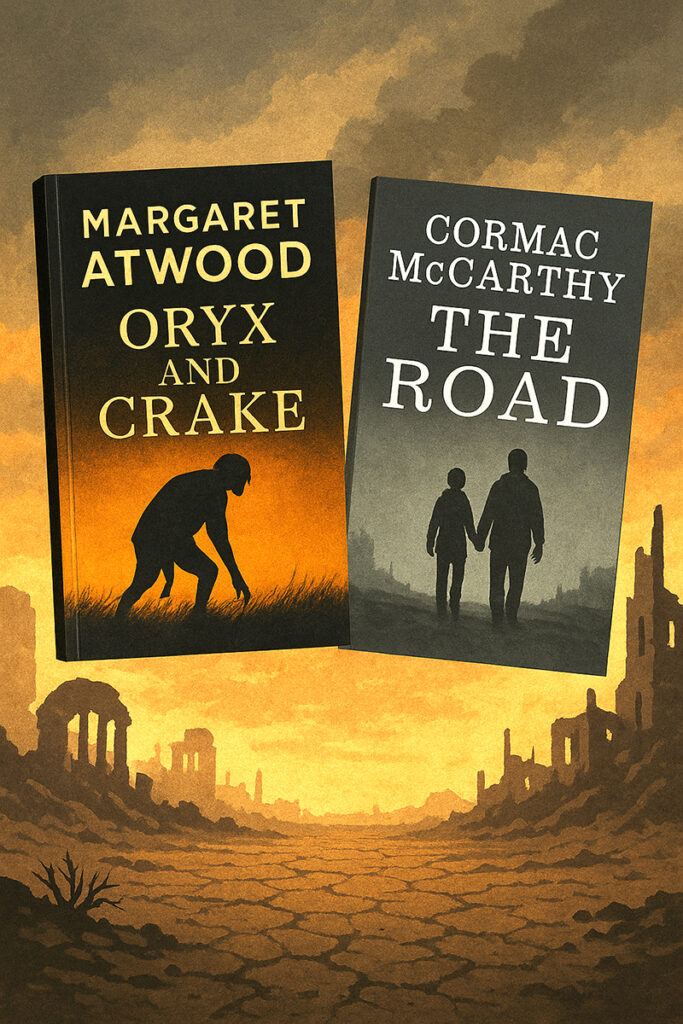Two Bestsellers with Unhappily-Ever-After Endings
As if life weren’t dramatic enough, I’ve been reading novels that predict humanity may not recover from its abuse of the natural world.
Margaret Atwood’s Oryx and Crake imagines a near-future wasteland created by genetic experiments gone wrong. In an interview, Atwood explained the book’s eerie hybrids and collapsing ecosystems as a warning: “What if we continue down the road we’re already on? How slippery is the slope? Who’s got the will to stop us?”
For decades Atwood clipped bizarre items from the back pages of newspapers. What seemed paranoid fantasy then, she noted, often became reality. One telling example: she finished the book in the shadow of 9/11. “It’s unsettling when you’re writing about a fictional catastrophe and then a real one happens. I thought maybe I should turn to gardening books. But what use are gardening books in a world without gardens or books?”
Cormac McCarthy’s The Road strips the apocalypse bare. A father and son wander a nuclear-winter landscape, dodging cannibal gangs, scavenging for scraps, urging each other not to lie down and die. The prose is hypnotic, the mood ash gray. Yet beneath the bleakness, McCarthy insists that love can redeem even when redemption seems impossible.
Both novels echo earlier warnings—particularly in George Orwells’ 1984 novel Brave New World—that something “false within” is driving humanity to ruin. The Bhagavad Gita diagnosed the same disease millennia ago: “The demoniac say this world has no God in control, that its main moving force is sex, and following such conclusions they engage in unbeneficial, horrible work that can destroy the world. ‘So much is mine now,’ they tell themselves, ‘and it will increase in times to come.’”
Unlike novels which often offer no way out, the Gita provides a frame of consciousness that transcends borders and politics. Bhakti—the vision of all life as sacred—has the potential to be a practical program for social reform, but it will require compassion, respect for nature, and concern for the wellbeing of all. Disasters may come, but in a culture guided by devotion, they need not be final. A simple acknowledgment of life’s sanctity opens access to unseen resources and creative ideas for restoration. Even a hint of humility, the Gita suggests, can nudge humanity and the natural world back on track.
The Gita may lack the page-turning thrills of apocalypse novels (for that, see its parent epic, the Mahabharata). But for readers who want to close a book feeling more hopeful than horrified, the Gita is the ultimate survival manual.
